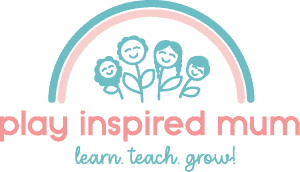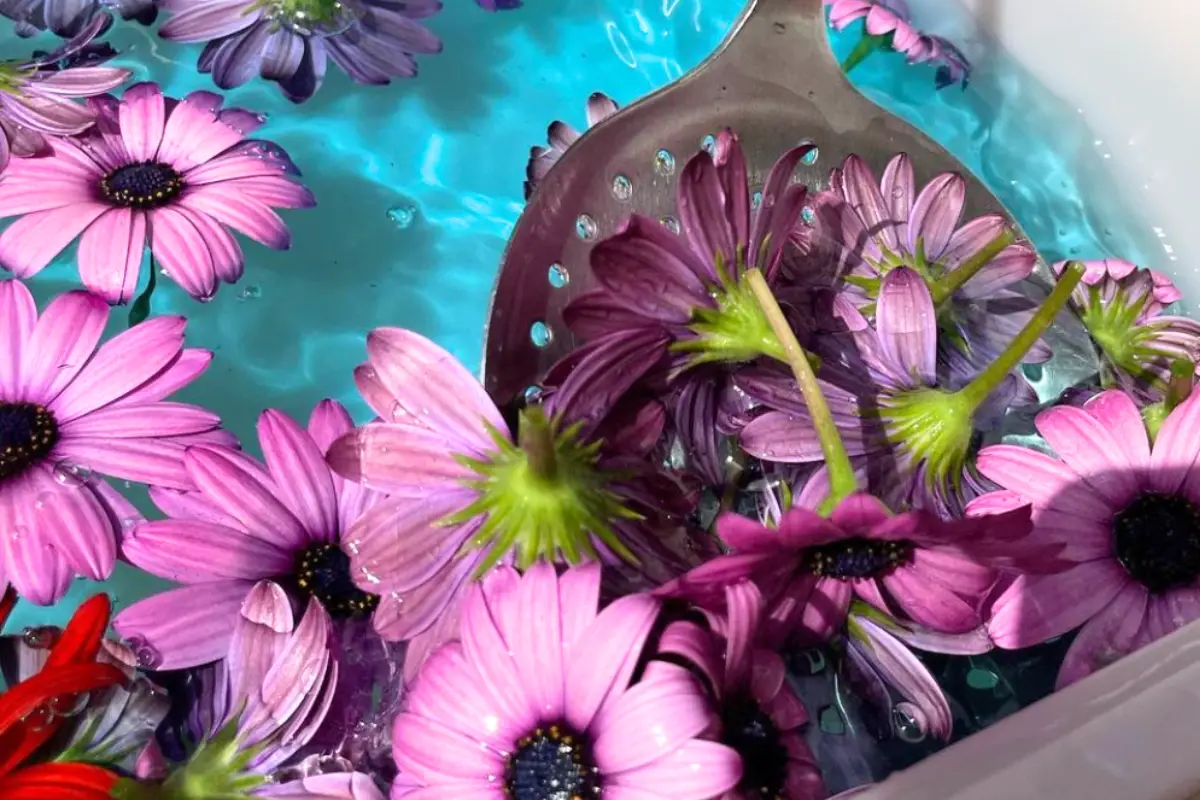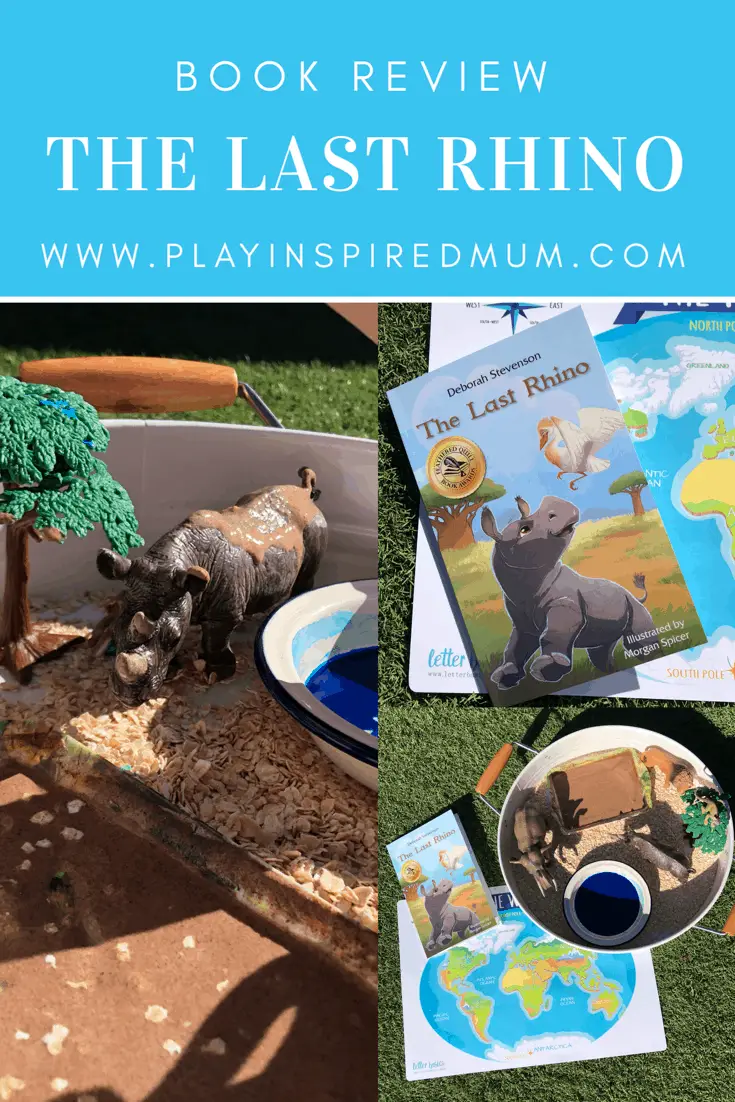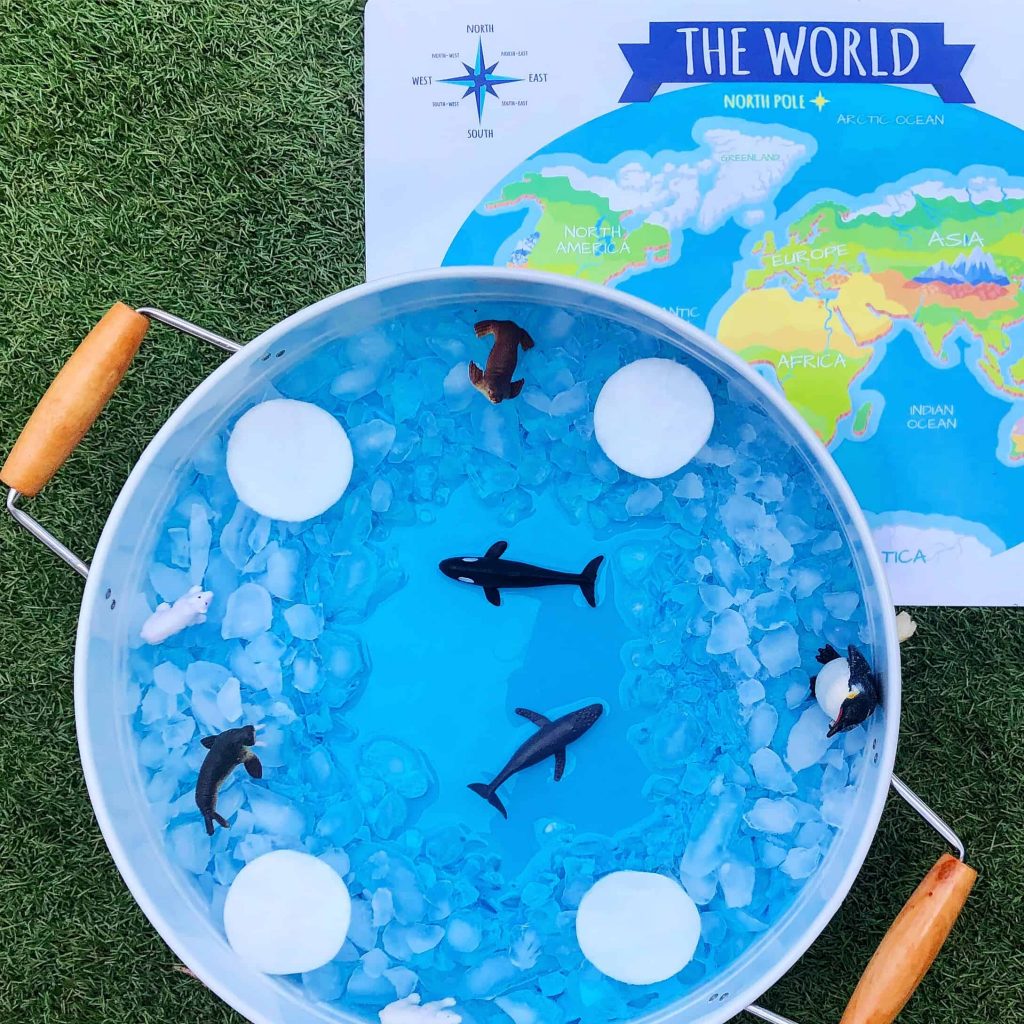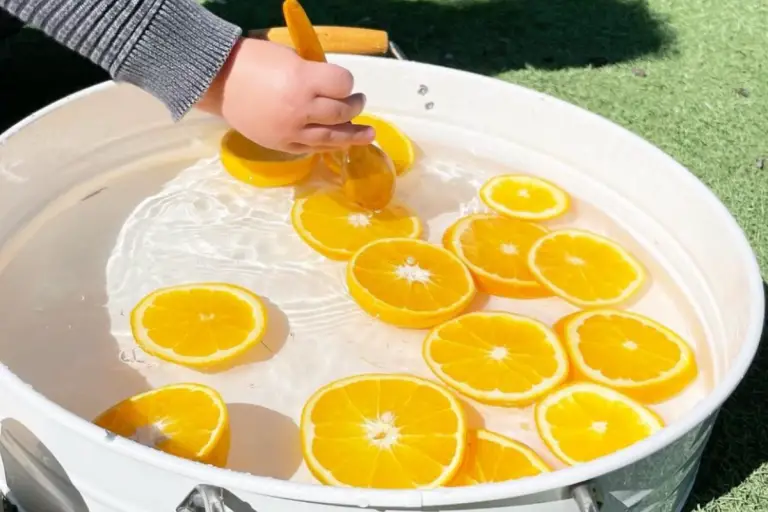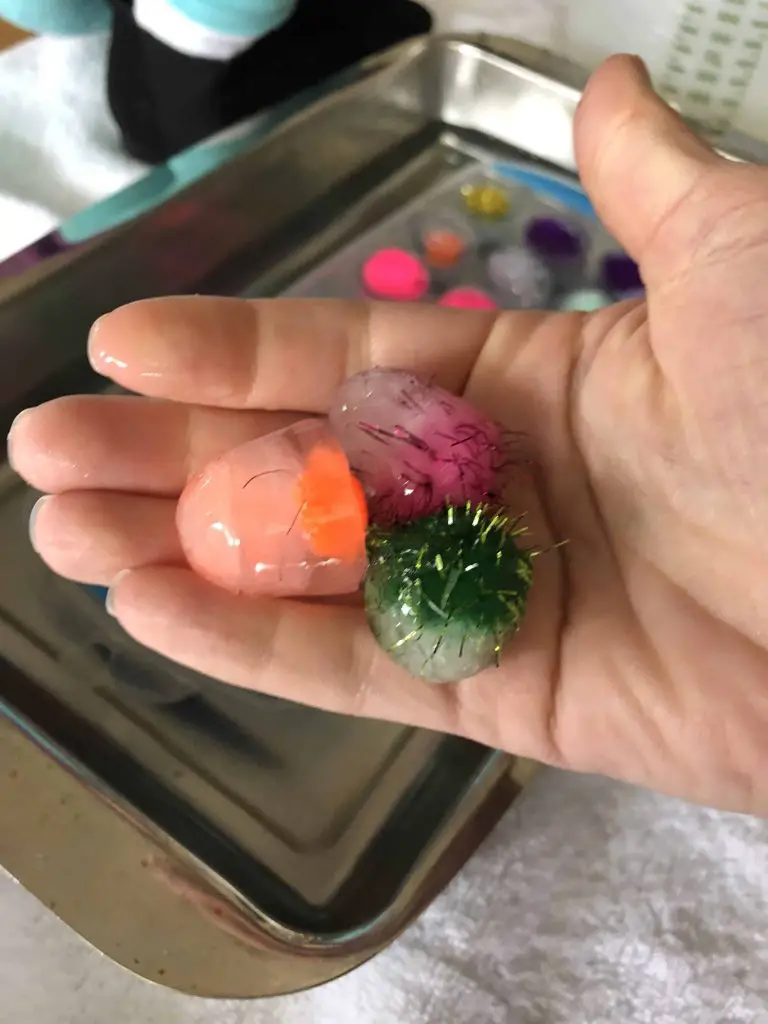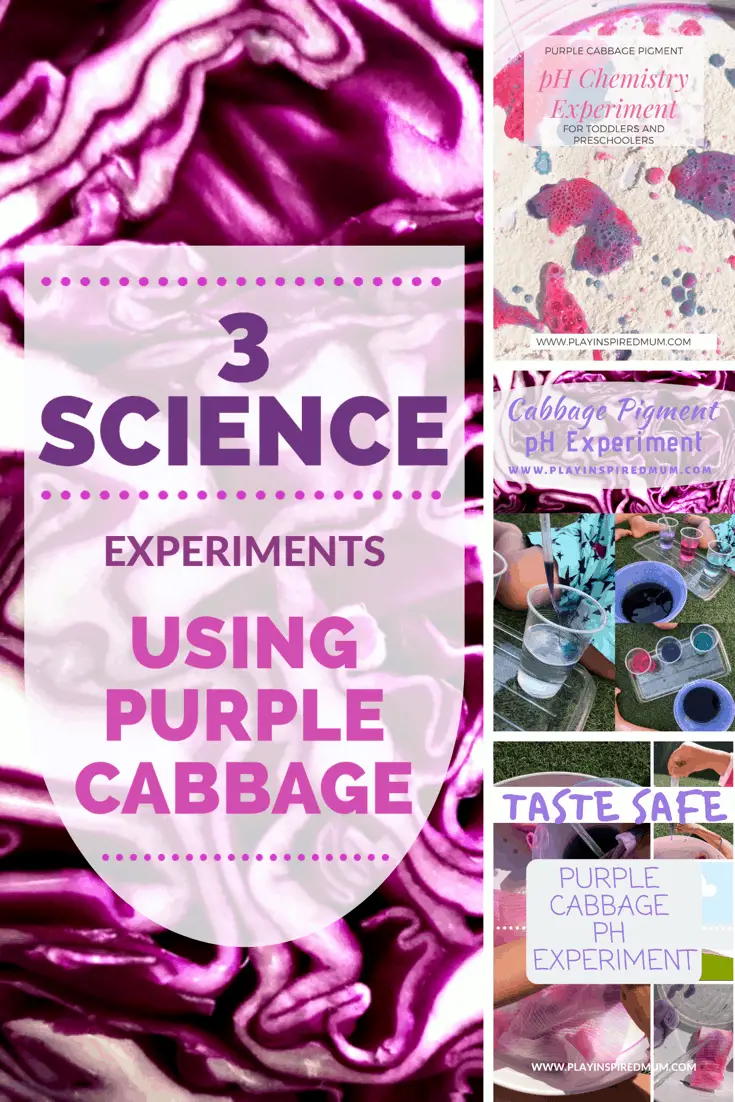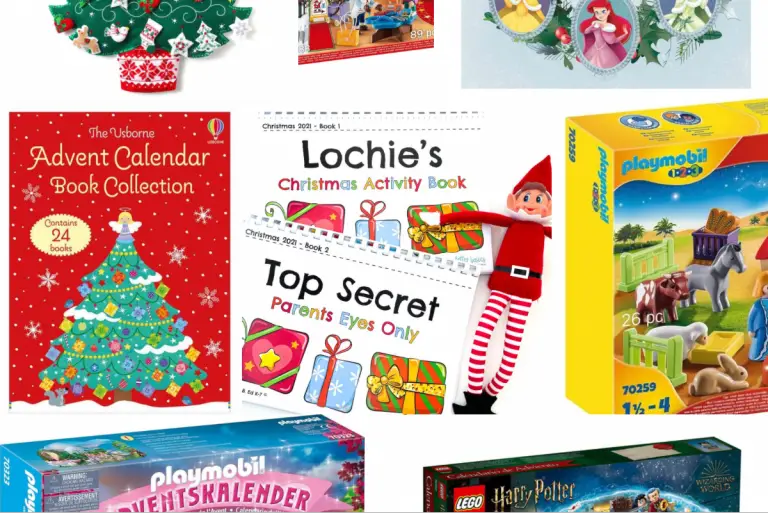Blossoming Fun: Flower Soup Sensory Play for Toddlers
Disclosure: This blog contains affiliate links which I may earn a small commission from if you purchase through them, at no extra cost to you.
Create a colourful easy set up sensory water play activity for your toddler with flower soup!
Now we aren’t talking an edible soup but this array of petals, stamen and leaves will inspire loads of learning through play while your toddler also has plenty of fun.
Flower soup takes minutes to set up and will engage and entertain while you can sit back and enjoy a moment of sunshine or become the flower soup shops best customer.
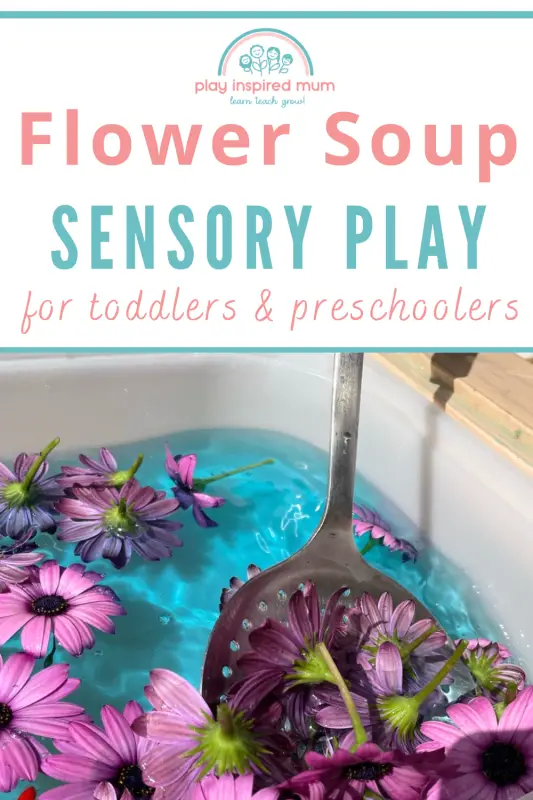
Introduction to Flower Soup Sensory Play
I have discovered a wonderful outdoor activity that blends nature, imagination, and sensory play.
Dubbed flower soup sensory play, this simple pastime has transformed how toddlers engage with the world around them.
By marrying the tactile pleasures of water play with the vibrant hues of flowers, we create a rich canvas for young minds to explore.
The act of picking, pouring, and stirring not only captivates their attention but also hones their fine motor skills.
This sensory bin activity introduces preschoolers to the fundamentals of science learning in an accessible and enjoyable manner.
It encourages toddlers to experiment with textures, colours, and smells, laying a foundation for a deeper appreciation of nature’s diversity.
In essence, flower soup sensory play is more than just fun; it’s a gateway to imaginative exploration and early childhood development.
Gathering Your Materials
Gearing up for a fun-filled session of flower soup sensory play begins with easy steps.
You will need just a few accessible items.
- Old flowers
- a bin
- water
This simple list of materials make up the core components.
They promise a stimulating experience for toddlers, focusing on sensory play, nature play, and fine motor skills.
Scouring your home or a local florist for old flowers can be a cost-effective start.
The simplicity behind gathering these materials makes this toddler activity a favourite.
It serves as an engaging way to explore water play activities while fostering learning through play.
This approach rings especially true in spring, transforming it into an anticipated spring sensory play.
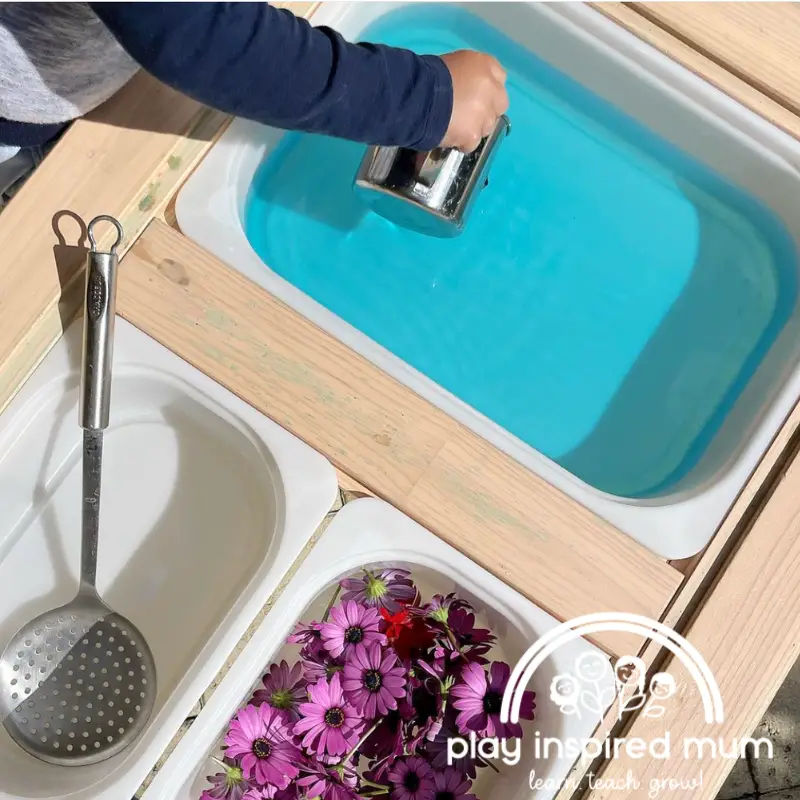
Adding Household Items
Adding kitchen utensils boosts the sensory experience for your toddler. Think of items that are safe and can stir the imagination along with the flower soup.
- Spoons serve not just for stirring but also for transferring water play activity from one area to another, enhancing hand-eye coordination.
- Bowls become vessels for mixing and pouring, key actions in fine motor skill development and learning through play.
- Colanders introduce an exciting element of water play ideas, allowing little ones to explore concepts like filtering and sieving.
- Funnels challenge their dexterity and precision, crucial for science learning and dramatic play.
These simple additions transform water play into a deeper learning journey, crossing the midline of creativity and sensory exploration.
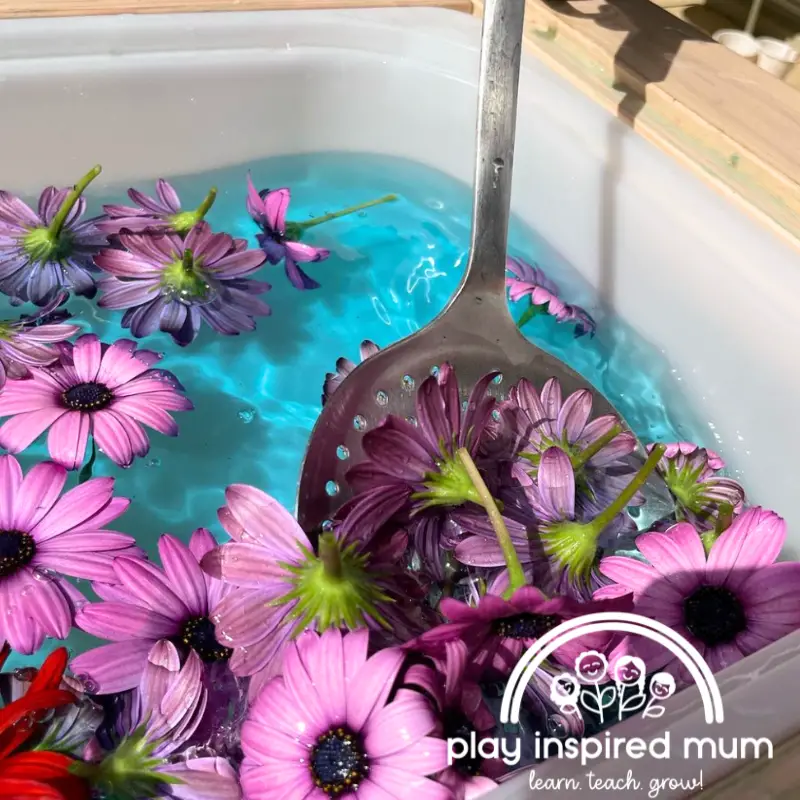
Step-By-Step Guide to Creating Flower Soup
I always felt that engaging toddlers in sensory play sparked not just their creativity but also their fine motor skills.
So, I decided on a simple water play activity that involves nature play at its best: flower soup.
First, we gathered flowers, ensuring not one was harmful. We ventured into our garden with a pair of scissors and basket. Mr 2 took care to cut the flowers from the plant before placing them into his basket.
Next, I took our trofast table with its plastic bins outside and poured coloured water into it, just enough to let the flowers float.
This basic setup served as the foundation for an easy sensory play experience.
With everything in place, I encouraged him to dive in, exploring the texture of petals and leaves.
By adding kitchen utensils, they stirred and scooped, enhancing hand-eye coordination and learning through play.
This straightforward process, from collecting materials to immersing in water play, promised fun ways to develop essential skills.
Throughout, the joy of this preschooler activity was unmistakable.
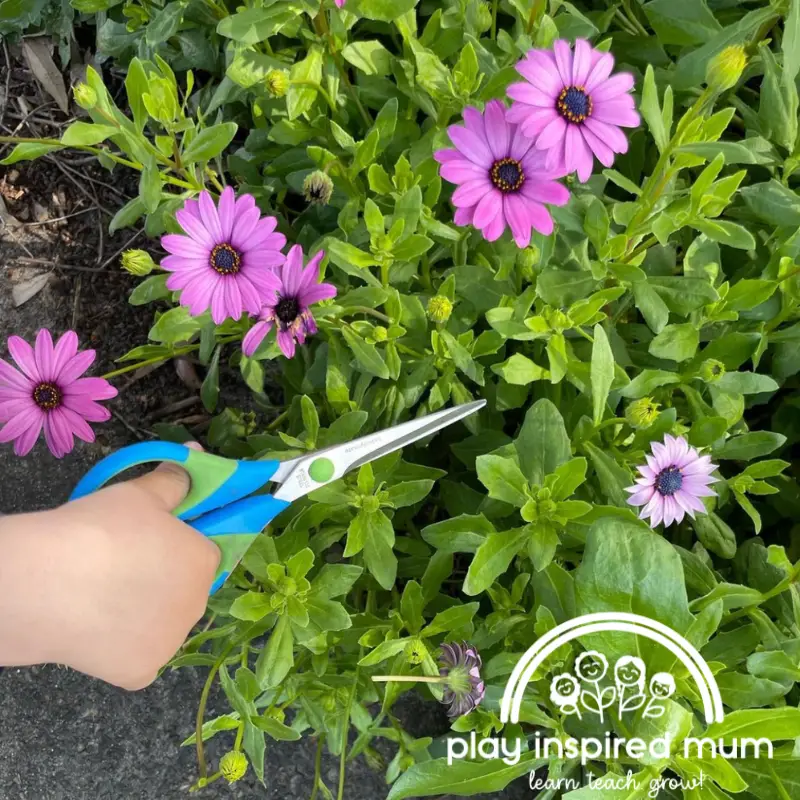
Enhancing the Experience
To enrich the sensory play experience, adding household items can transform the flower soup activity.
Items like spoons or whisks allow toddlers to stir their concoctions, enhancing their fine motor skills and hand-eye coordination.
By incorporating these simple kitchen utensils, you also promote the development of crossing the midline, which is crucial for their cognitive growth.
Introducing varying textures such as leaves or small sticks can offer new sensory discoveries.
These additions provide an opportunity for toddlers to explore nature play more deeply while learning through play.
The act of scooping, pouring, and mixing opens up avenues for water play activity that is both educational and fun.
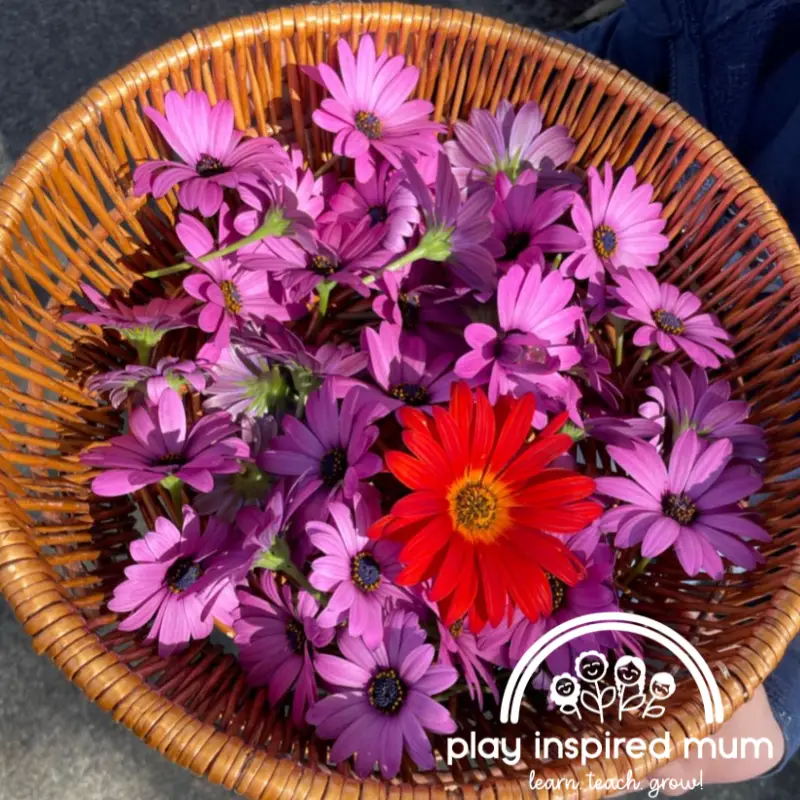
Educational Benefits
Flower soup sensory play stands as a conduit for myriad educational benefits that stretch beyond mere amusement.
It introduces toddlers to basic principles of science learning as they explore the transformation of flowers in water, sparking curiosity and fostering a love for nature play.
This activity also nurtures fine motor skills and hand eye coordination, crucial elements for developmental milestones.
They will master the art of pouring, stirring, and picking up petals, each motion fine-tuning their dexterity.
Engaging in this water play activity encourages crossing the midline, an action essential for cognitive development.
By reaching across their body to interact with elements within the sensory bin, children enhance brain communication between the left and right hemispheres.
These components come together, not only cementing a foundation for academic skills but also propelling them towards more complex learning through play.
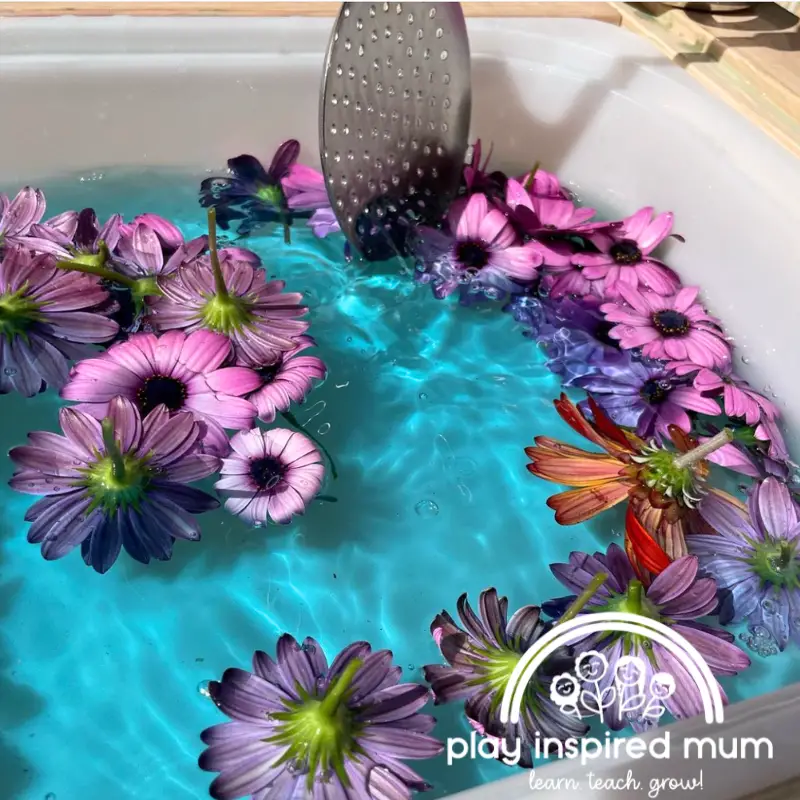
Safety Tips and Considerations
Offering toddlers the joy of sensory play with activities like flower soup can be incredibly rewarding. However, ensuring their safety is crucial.
You must remain vigilant to avoid any mishaps. Here are a few guidelines that will help you keep the playtime both fun and safe.
- Always supervise: Keep a close eye on children at all times during play. Their curiosity can lead them to put items in their mouths or wander into unsafe areas.
- Avoid toxic plants: Research flowers and plants before including them in your bin. Some may be harmful if ingested or touched.
- Use safe utensils: Ensure all tools and containers are child-friendly, avoiding sharp edges or small parts that could pose a choking hazard.
- Check water cleanliness: Replace the water if it becomes dirty to prevent the spread of germs. Consider using clean, potable water for the activity.
By following these simple yet effective tips, you’ll create a secure environment where toddlers can explore, learn, and grow through flower soup sensory play.
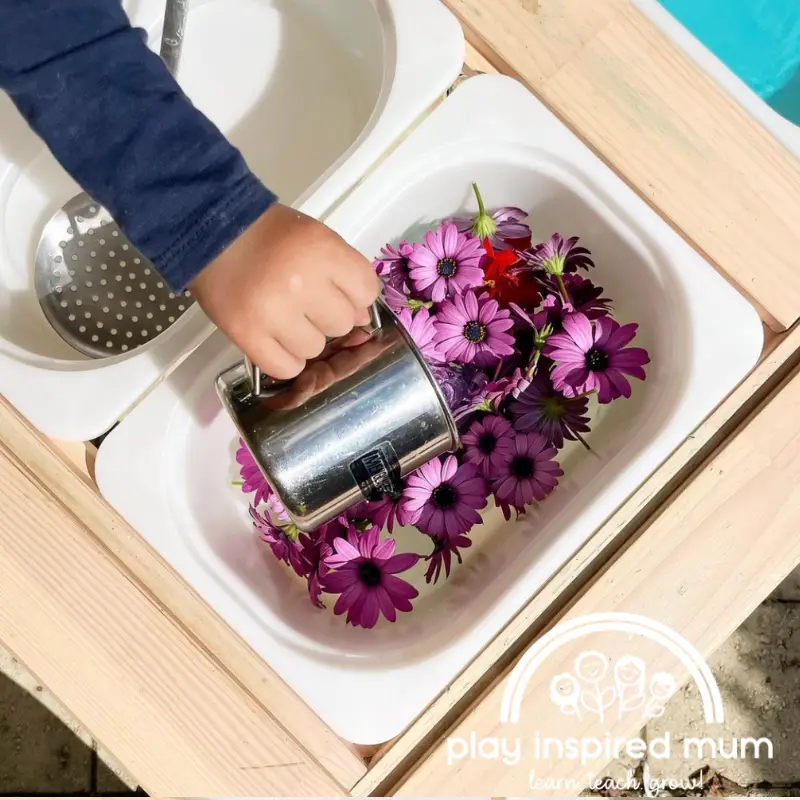
Creative Twists on Classic Play
Innovative twists have the power to transform flower soup sensory play from a simple water play activity into an extraordinary learning journey.
Freezing flowers in ice introduces toddlers to novel textures and temperatures, offering a refreshing twist on traditional spring sensory play.
This approach not only enhances their sensory experience but also paves the way for exciting science learning opportunities.
Fine motor skills receive a boost as little ones work to excavate flowers from their icy confines.
Leveraging this activity to teach about nature turns a fun way of engaging in sensory play into a meaningful educational moment.
Children marvel at the lifecycle of plants, understanding science concepts firsthand.
Whether integrating dramatic play or focusing on the development of hand-eye coordination, the possibilities for enriching this preschooler activity are boundless, encouraging endless exploration and creativity among our youngest learners.
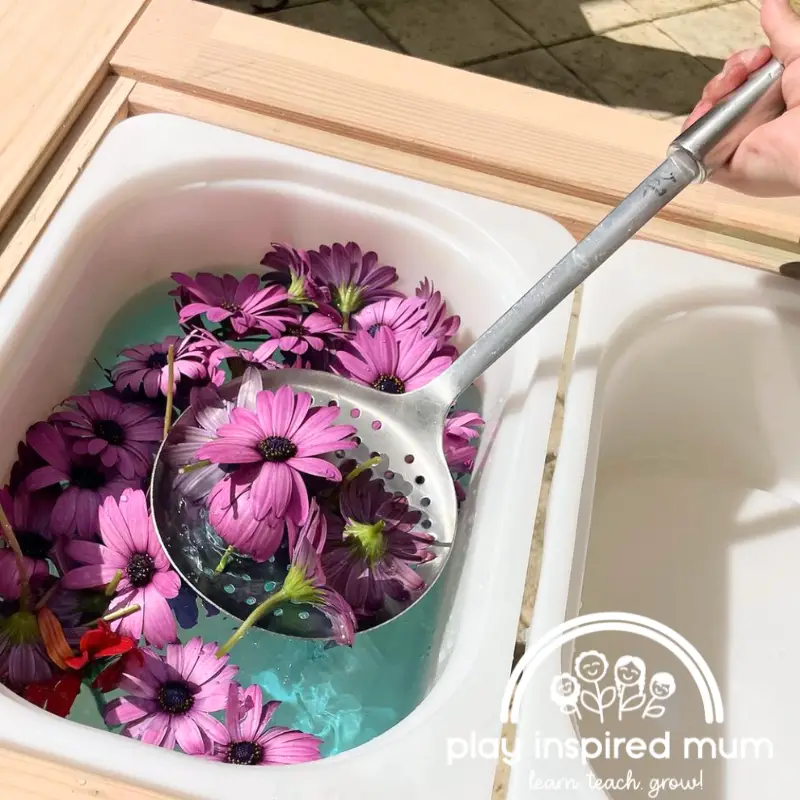
Maximizing Reused Materials
We often overlook the potential of items past their prime.
Old flowers, those too wilting for decoration, find a brilliant second life in sensory play.
I’ve discovered transforming these into a flower soup sensory bin encourages not just wonder but also a resourceful mindset in toddlers.
Enticing them with the vibrant hues and textures, this activity serves as a fun way to delve into nature play.
Maximizing reused materials is not merely an easy kids activity; it is a step towards instilling a respect for our environment.
By choosing to repurpose what some might discard, we illustrate the importance of sustainability.
This practice in our preschooler activity toolkit can spark discussions about recycling.
The simplicity of gathering materials needed for flower soup emphasizes its accessibility, making it an ideal choice for a sensory bin focused on learning through play.
Incorporating elements like water play and fine motor skills development, we craft experiences that enrich both mind and planet.
By embracing the ethos of reusing, we lay the foundations for a generation that values resourcefulness and environmental stewardship.
As caregivers, our choice to engage in activities like these is a declaration of the kind of future we wish to cultivate.
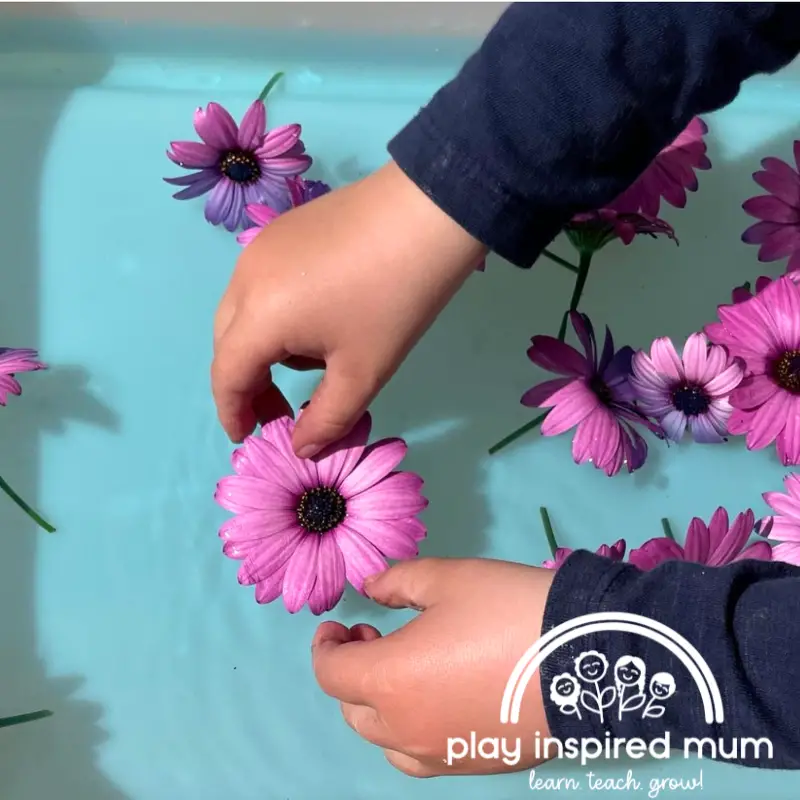
Bringing Play to a Flourishing Finale
Engaging toddlers in flower soup sensory play has ushered them into a world where creativity blooms and fine motor skills flourish.
I have witnessed how these simple water play activities, blending nature play and sensory bin explorations, have sparked joy and curiosity.
They afforded us countless opportunities for learning through play, a cornerstone in early childhood development.
In these moments, traditional toys were set aside, and simple items found in nature became treasures in the hands of young explorers.
Throughout this journey, I realized the profound impact of sensory play on developing minds.
It nurtured not only their hand-eye coordination and fine motor skills but also sowed the seeds for early science learning.
This process opened up avenues for toddlers to explore, experiment, and understand the world around them in ways that books and screens simply cannot replicate.
It was a reminder that the best learning experiences often come from the simplest activities.
As we reused materials, maximizing every petal and leaf, it reinforced the value of resourcefulness and the beauty of seeing the world through imaginative eyes.
Once we finished our play, the flower remains were retired to our worm farm and the water was poured onto our potted fruit trees.
All that was left from this water play activity was the memories and lesson learned.
As this exploration comes to a close, let’s continue to encourage our little ones to dive into the sensory-rich experiences that nature play, like flower soup sensory bins, offers.
May they always find joy in the splashes of water, the texture of petals, and the myriad possibilities that simple, sensory play brings.
